Sakuna: Of Rice and Ruin may look like a game for kids (plucky young heroine, cutesy graphics, 2D platforming etc) but it is anything but. Underneath the polish and cuteness there’s a rice farming mechanic that will more than likely put off most casual gamers. This is not your simple plant it, water it and harvest it – Sakuna covers every step of the process and involves a level of detail I have not seen in many farming games.
Coming from two-man team Edelweiss, who created the acclaimed Astebreed mech shooter, Sakuna has been a labour of love for years. It attempts to tell a decent story, tax your brain with crop yields, and break your fingers with its combat. There’s no hiding that’s a lot of things at the same time, and not necessarily things that go together. I can’t remember ever seeing 2D combat paired with an in-depth farming system. So does it go against the grain and make these disparate elements work, or is it one sushi roll too many?
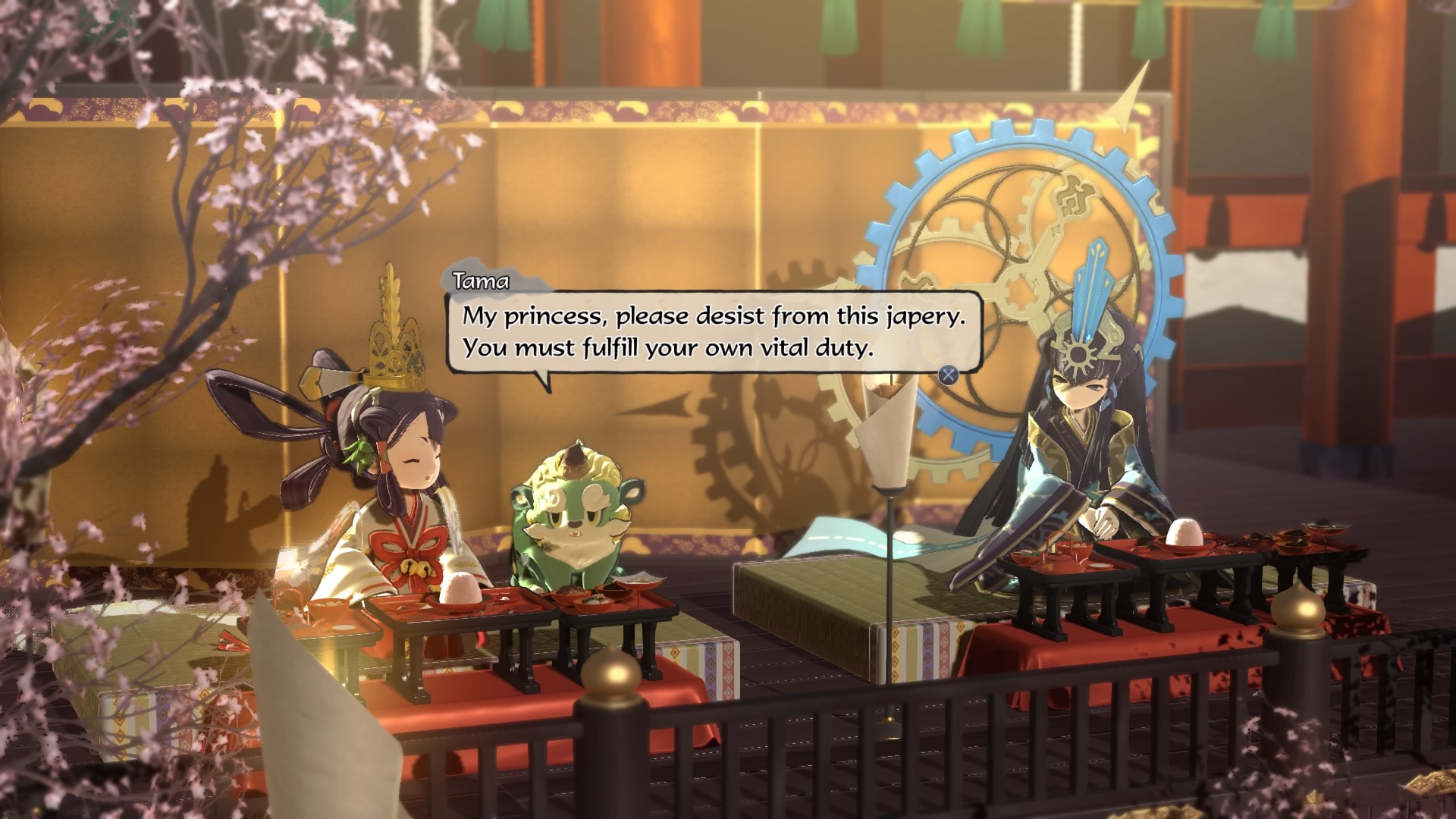
Spoilt Little Rich Goddess
Living in the Capital city of the Gods, spoilt-little-rich-girl goddess Sakuna has lived a life of luxury and wanted for nothing. She spends her days drunk and disorderly, trying the patience of the other gods and her advisor. When one day a small group of humans happens upon the Celestial bridge looking for food, they find their way into the capital and the rice offerings for the head goddess Kamuhitsuki. Sakuna chases them and in her haste manages to burn down the offerings. She is punished by being banished to the Isle of Demons, the isle where her parents (the warrior and harvest gods) were from, to clear it of said demons along with the humans. Her advisor isn’t too broken up about it though, he thinks she might learn a few hard lessons down in the human world.
Once on the island Sakuna and the group find her parent’s old house, and its’ caretaker. Though Sakuna thinks she can convalesce and sleep her time away here, the stores are long depleted and the demon-infested island stops any foraging by the humans. She will need to farm and forage if she’d going to keep them all alive.
The story of Sakuna takes place over a number of years (shortened for gaming purposes into seasons that last just three days) as Sakuna and the gaggle of fun humans – a baby, a foreigner woman, a disgraced samurai, and two children – learnt to farm the rice paddy near their home, increase yields, clear the surrounds lands and forest of demons, and learn valuable lessons about working together, in an effort not to starve.
Check one for Sakuna – it has a character arc, something so often lacking in video game stories. Like the best Disney heroines, Sakuna must learn something from her ordeal. The worth of her hard work, the price of the food and riches she enjoyed in the capital, and the self-worth of helping others. She is often all that stands between them and starvation. And even though a few times Sakuna resumes her former behaviour, she does begin to mellow and learn.
It’s a decent story but it is one that is maybe aimed a little young. I should have realised this from the graphics and overall presentation, but there’s not a lot in the story that could realistically be called an adult narrative. The characters are fun and fresh, and though there’s a little over-the-top anime voicework in places, most of it is pretty good.
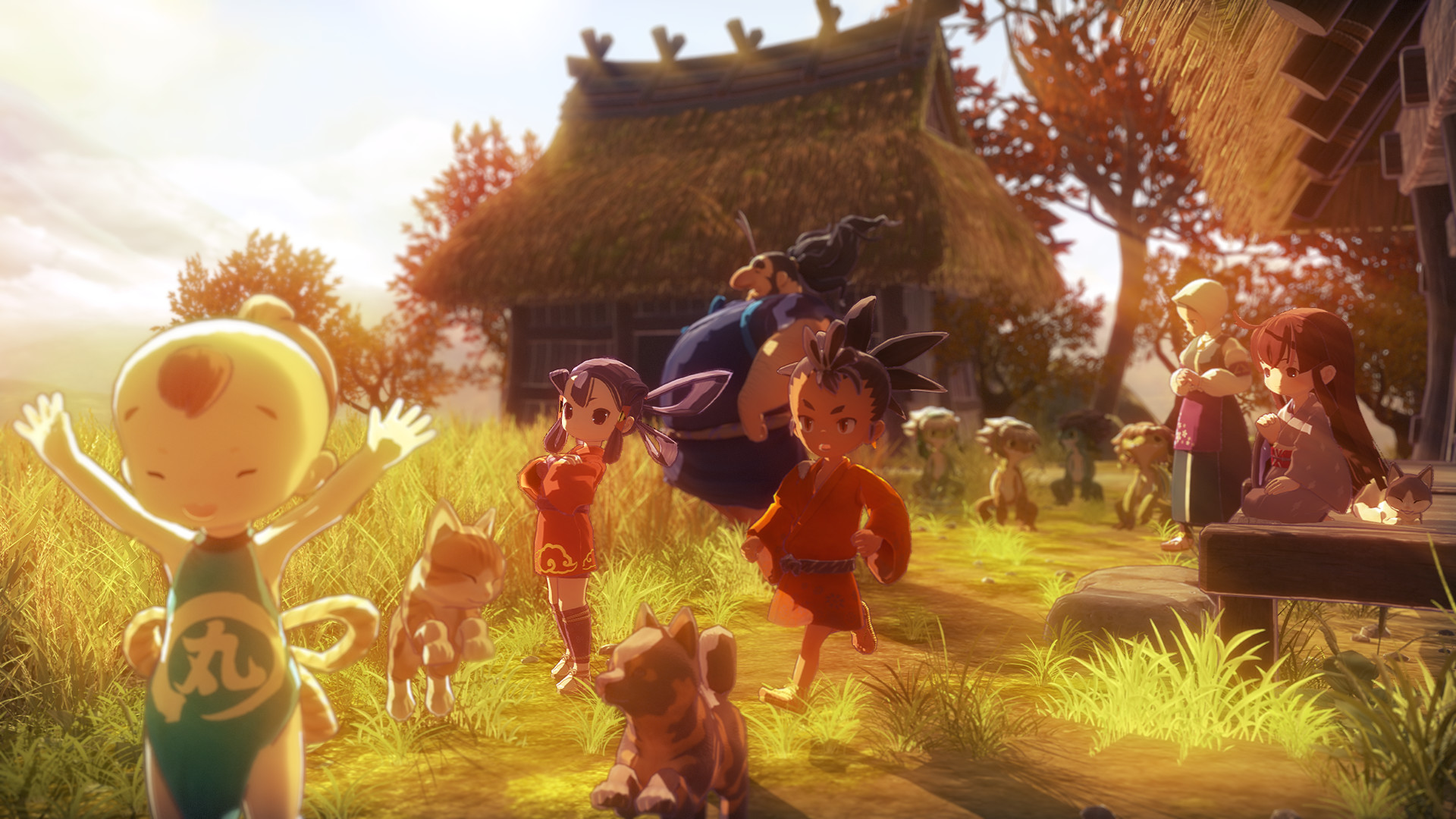
The Rhythm Of The Seasons
Your day by day gameplay in Sakuna will come down to cycling through the different mechanics. Wake up, tend the field, pick weeds etc, mix some fertilizer. When there’s nothing further to do with your field that day, you can explore the island, choosing to complete 2D platforming and combat sections that will drop food and items. Then when it gets dark its back to the farm (because the enemies become far more powerful) and a final tidy up of your farm. Myrthe, the foreign woman, will cook up some food from what you scrounged together, and the characters will often chat over the meal, before going to sleep and doing it all over again the next day.
On some days things change, new elements are added to the farming, or its harvest day, but in general this is the pattern. That’s only a problem if one or more elements don’t appeal to you, or if like me, you get bored by repetition. It’s clearly going to also work just fine for some people, so I’m not framing it as a negative. It’s very helpful to know what needs to be done and when and how to do it.
Let’s take the two main gameplay elements one at a time.
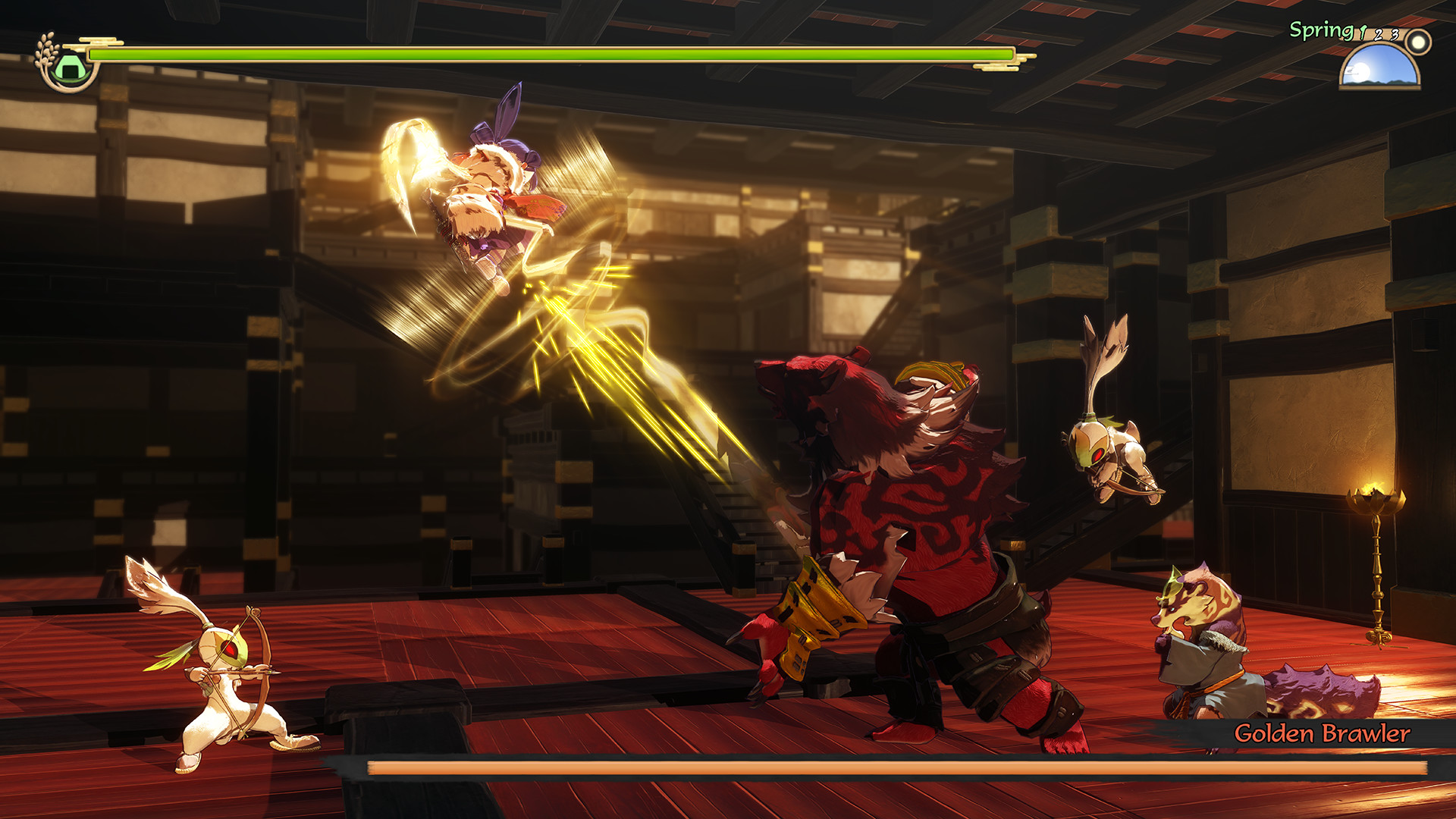
One Scarf to Rule Them All
Firstly combat and platforming. Combat in Sakuna is fast and frenetic. Demonic woodland animals accost you as you’re foraging and you can unleash a flurry of direction-based light and heavy attacks, that can be easily strung together into combos. Hold up and generally the moves will work like uppercuts, propelling the enemies and Sakuna into the air and allowing for an air combo; hold down and you’ll smash enemies towards the ground again. While it’s fast and easy to combo, it’s hard to get good at – there is little ability to block and dodging, well, dodging is an issue all its own.
Let me explain. Sakuna has a divine raiment (think a long golden scarf, that I assume is weighted) that she can throw out in eight directions, allowing her to stick to an enemy and then fling herself round from the front to the back, and carry on the attack. Got an opponent with a shield, no problem, raiment round the back and wail on them before they have chance to turn around. This is basically the dodge command at the same time, so you are forever worrying about placement of enemies more than is comfortable. All the enemies on the left side of the screen? Well now you can’t dodge right.
On top of that, you earn moves for the raiment (let’s just call it a scarf), for the scarf, that mean you can throw smaller or damaged enemies into bigger enemies, causing ‘crash’ damage. This is almost essential in boss fights as they won’t take much notice of your normal combos and will hurt you very fast. But no matter what one of the four mapping options you use for the scarf toss, it’s a fiddly mess to perform. Again you need enemies on both the left and right to perform it, and this means boss battles are covered in smaller enemies that you are constantly chasing from left to right and back again, trying to get them in position to throw at the boss, and then mess the button combo up.
Platforming in these sections is the biggest let down of the game. Move left and right jumping between ledges and having fights, and using your scarf sometimes to stick to walls and ceilings and get a boostup. Sounds fine but it’s just so simplistic in practice that it becomes a chore to do. You’ll need to do these sections over and over to collect food, and so I see the design choice in making them simple, but they just became really dull.
The platforming is too forgiving to offer any challenge. You will be easily able to grab onto almost any ledge, and there’s no jump you can’t retry. There’s not really any consequence to the platforming – you’ll pretty much never die, and you rarely fall. And even if you fall, there’s never a hole that actually kills you. It’s just a hole, climb back out. Mario, Rayman and Crash would laugh at it. What, you can just get back out of the hole? Well, then what’s the point of this platforming?
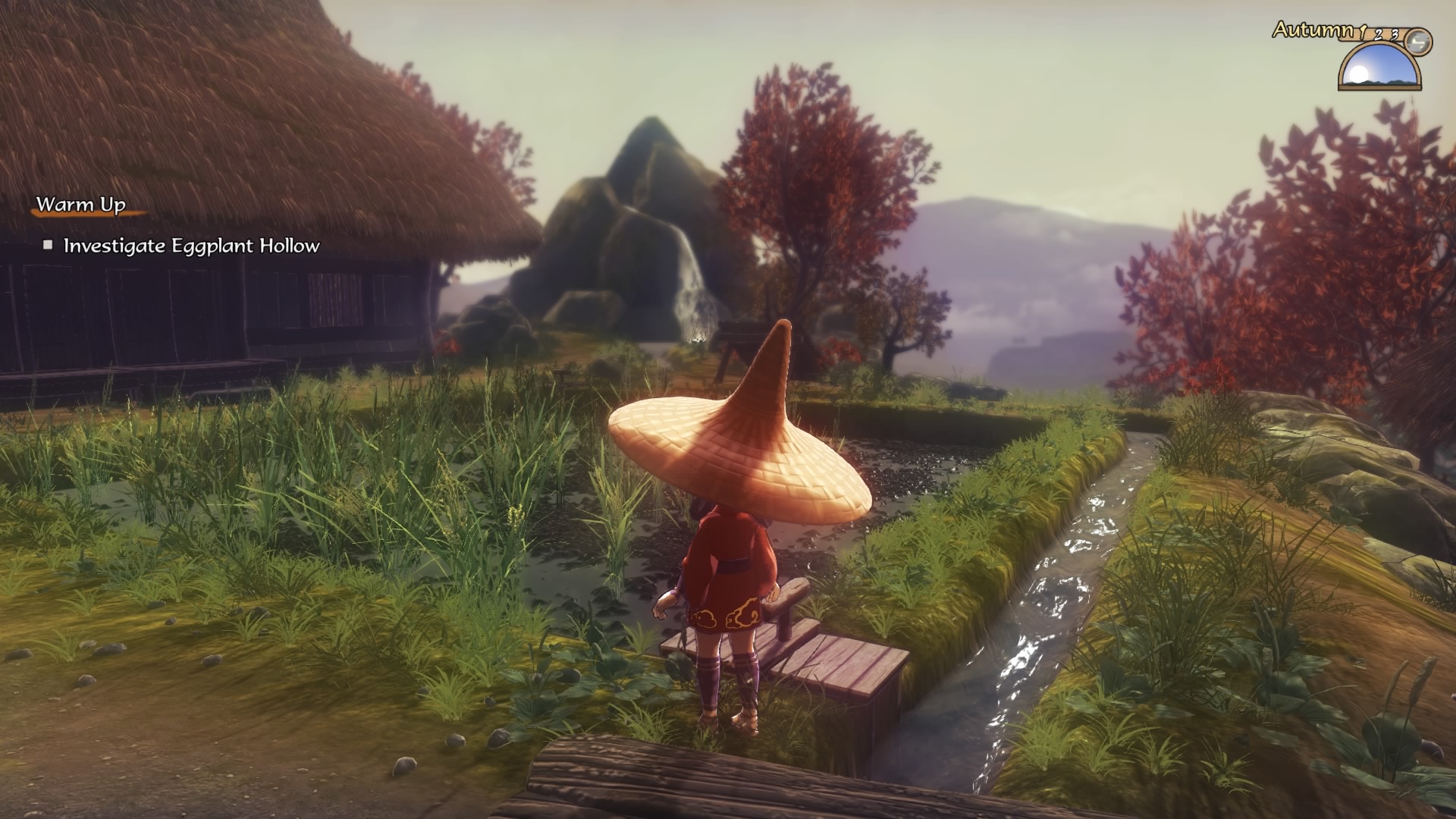
Have A Rice Day
The second part of Sakuna’s strange mashup is the rice farming, and it’s here that its strengths actually lie. What starts as a simple process of planting rice seeds, develops over many cycles and bite-size gameplay additions into a pretty damn in-depth rice farming simulator, the likes of which I have not seen before. I’ll explain the process so that you can see what you’re in for.
First you take rice husks and plant them in the little paddy field out front of your shack. The paddy fills with rain on a regular basis (it’s always raining on the hilltop) and the rice husks take root. Then it takes something like five days for the rice to take root and then ears to form and for it to be ready to harvest. All the while Sakuna must check for weeds on a daily basis and pull them out of the paddy field. Then you harvest and eat right? No, I said in-depth, right? So once you’ve cut down the stalks they need to be dried on racks set up on the paddy field edge, then it’s time to thresh them in a little mini-game that pulls the grain from the stalks, and then hulling (and another mini-game) to grind away the outer husk and leave you with white rice.
Then you’ve got to restart from scratch after the winter has hardened the soil, and there’s a whole load of new processes. First comes tilling, breaking up the hard soil, then cultivation which is basically taking the poop that you and the villagers have made and making fertilizer out of it in a pit (thankfully once it’s ready, spreading the fertilizer is about the only job you don’t have to do yourself), then it’s back to planting from the little seedlings in the storehouse. And the circle of rice begins anew.
You’ll get one hell of a detailed report about your rice growing after each harvest, enough that it’ll blow your mind slightly how much of what you’re doing the game is measuring. Once winter is over you can start all over again, and again, and again. Each time you can experiment with the depth of the water in the paddy field, draining and filling it, the ingredients in the fertilizer and its potency, and the way you manage every one of the different tasks, and maintain the field through the summer.
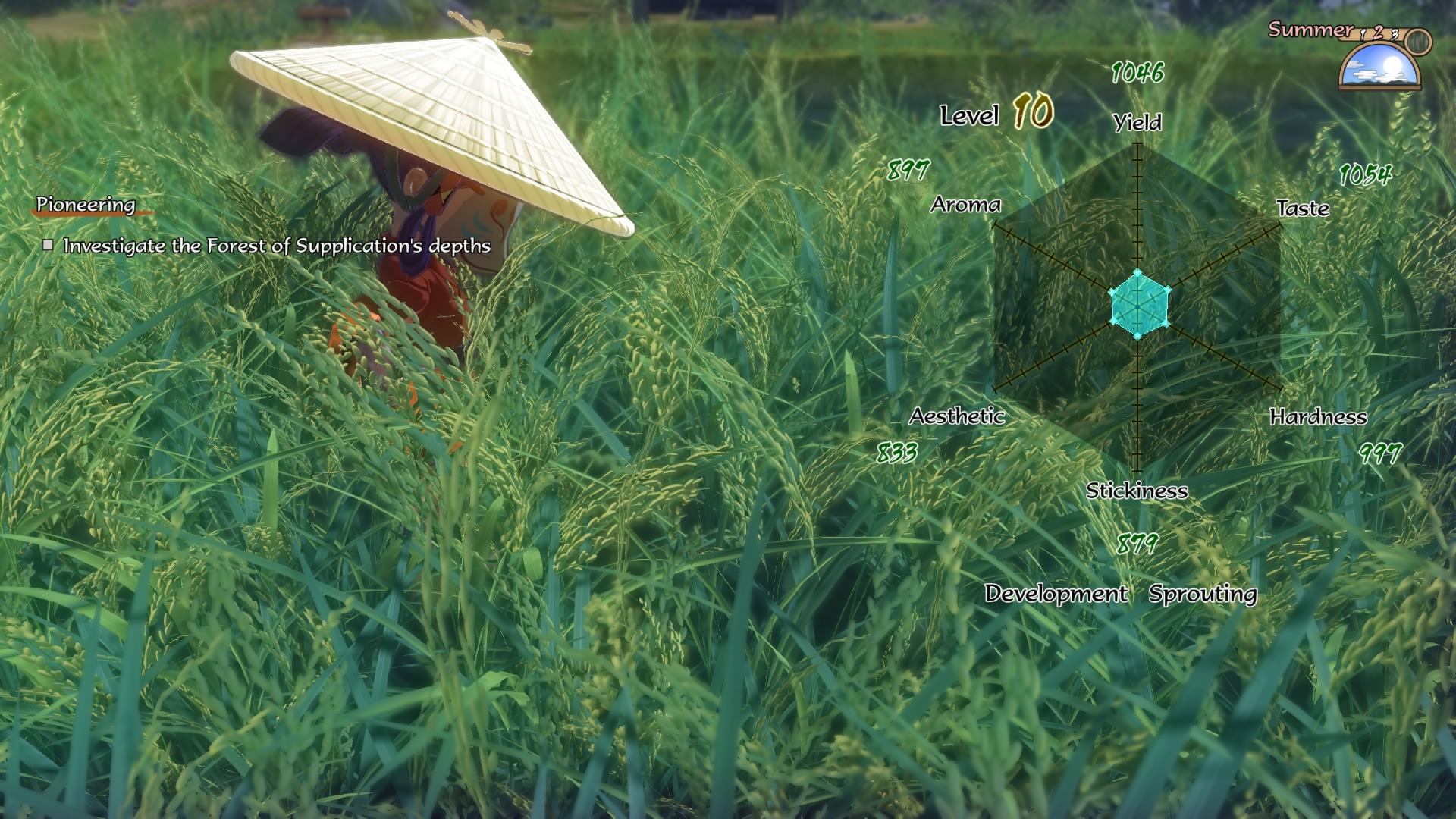
Let’s just say that this bit got addictive. I became far more interested in rice farming than I did in any of the combat or platforming, so much so that I began to resent having to go out and waste time, or forage, when really all I wanted was to farm. I’ve never been that into Stardew Valley or Harvest Moon, or Farming Simulator and all its iterations for that matter, but doing it all in a Japanese paddy field with cute characters made all the difference. Personally I wish this section were expanded – give me three more fields, with barley, wheat, and maize, and I would have been far happier than I was with the platforming.
The combat and farming are intrinsically linked. You are a harvest Goddess, so every time you harvest you also level up. You won’t level from killing enemies, but if your rice yield is good, and you hull it all into white rice, you’ll get +health, strength, vitality, magic, luck and gusto buffs. Plus food for your table. It’s a win win.
The principle that doing something ten thousand times makes you an expert holds sway in Sakuna. Kill a particular enemy lots of times and you will become more skilled against that type and develop new moves, weed a lot and you will gain skills to make you better at seeing weeds, plant a lot and you will begin to see the grid for planting seedlings. It’s a good system that feels focused and deliberate.
Also having your attributes tied to the harvest means that if you do get stuck on the fiddly combat in battle, you could just waste a year rice-farming instead, and level up ready to try the boss again come winter.
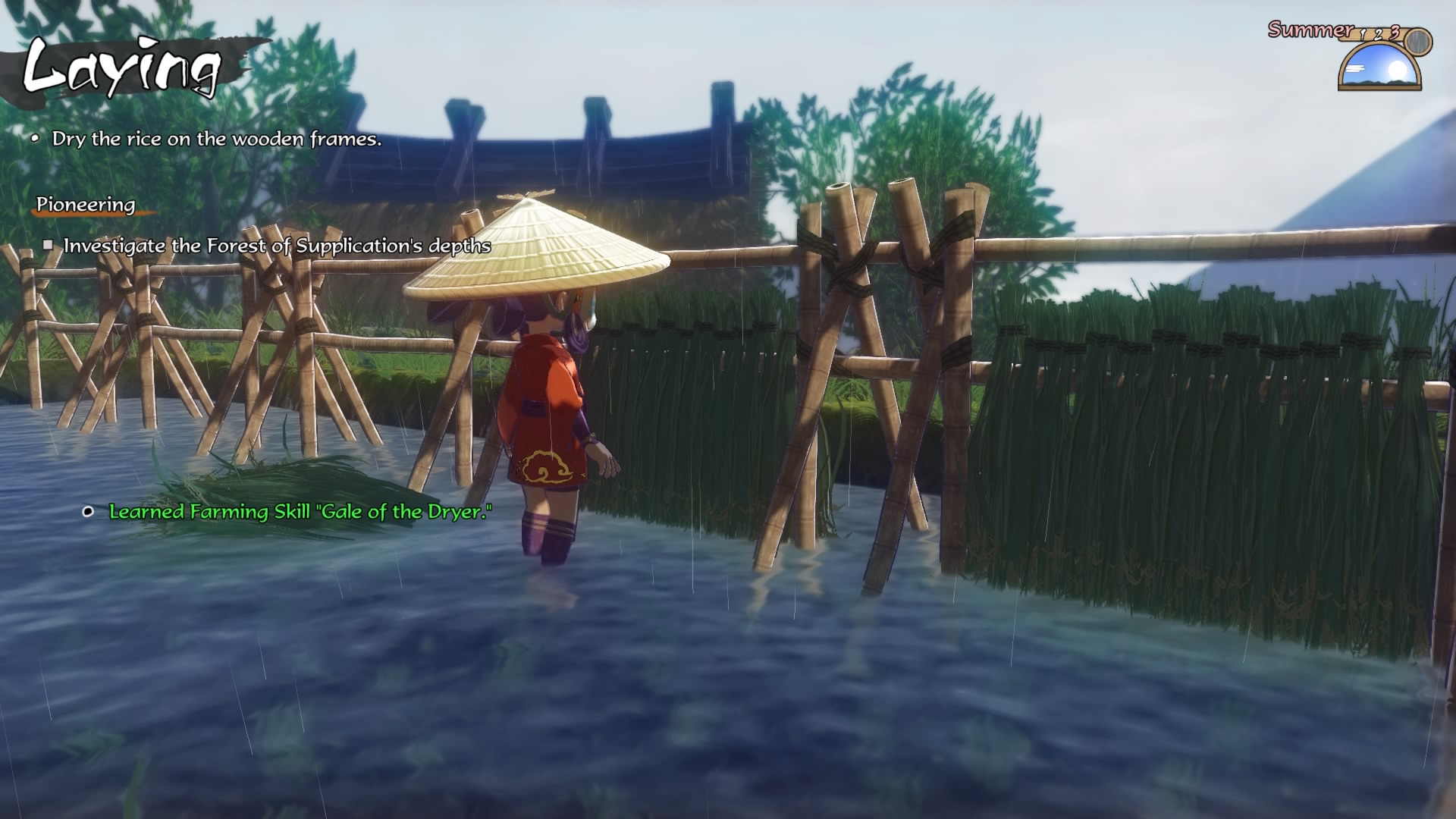
Against the Grain
Sakuna and her lovable companions have some great little character designs, sort of half-way to Akira Toriyama designs (of Dragonball Z and Dragon Quest) but cuter, and not quite as harsh and in your face as those can be. The world is lush and colourful, but it’s on the lower end of what current-gen graphics can do. It rains a hell of a lot in the Isle of Demons, and so I did find a lot of colour washed out most of the time, but that just means your harvest gets the water it needs, and when the sun does come out it’s all the more glorious. A quick note that I did find glitches of the graphical variety – enemies getting stuck in the environment, so they are unreachable and can still harm you was probably the most egregious example.
Sakuna features a few dozen tracks of pleasant and appropriate music for rice farming and battling, full of plucking zithers and raging drums, and plenty of soft ethereal wind instruments. I wouldn’t be surprised if they were all traditional and very fitting.
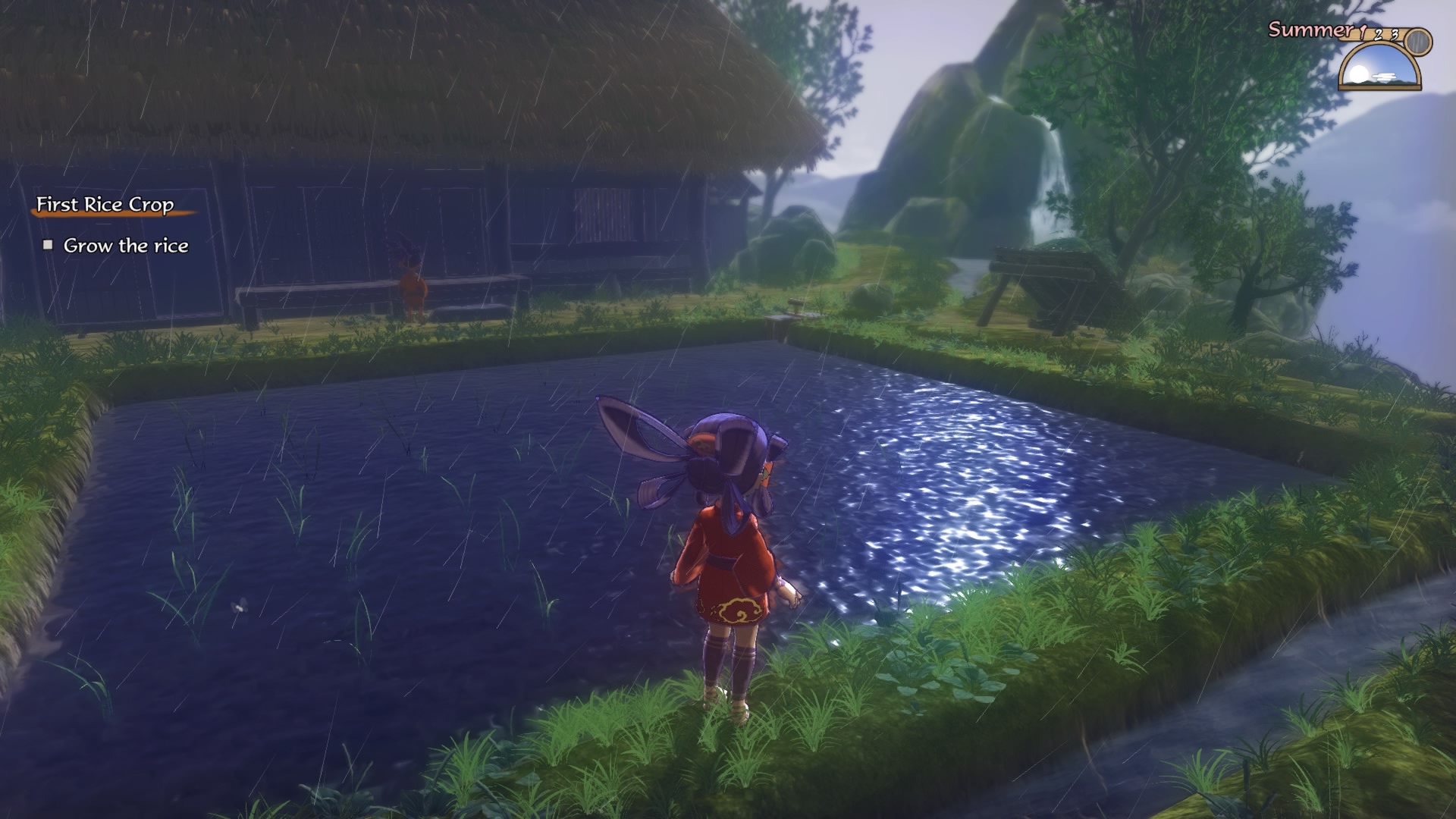
When The Harvest is Done
There is always something to be doing, even if you think you are on rice growing downtime. Someone needs materials for a hut, a loom, a blacksmith, different parts of the rice process need doing. There’s always more areas to explore and objectives. Even when I thought I was stuck on a boss, it was mostly because I hadn’t yet made the necessary weapons in the blacksmith, I’d ignored them.
The rice-farming elements, if they start to take root in your mind, are exceptionally detailed and tying this element into your combat stats is inspired. There is a lot of complexity to the farming, but that said it’s still pretty easy to just plant it, do the bare minimum and still progress. Those who want to can get very involved in yields and fertilizer, but it’s mostly optional.
Some will find the rice farming alone a little dull, so I’m glad the other parts of the package are there to balance out the meal. That said I found the combat less fun than I wanted to, and the divine scarf especially quite cumbersome to use effectively. Sakuna can get very stuck in combos, stopping you from being able to turn quick enough to then stop another enemy. The platforming is the weakest of the elements, requiring little to no skill and presenting no challenge or peril at all.
Where Sakuna shines instead is in its narrative which is cute, fun and actually has an arc. The characters are all three-dimensional and none of the villagers get left behind, all of them are explored and examined and broken down. And Sakuna chief among them goes from being a spoilt brat to a hard-working leader, even if she remains pretty precocious.
Some accomplished character work and a narrative full of heart, sits next to a deep and detailed rice-farming mechanic that will have you sinking hours in trying to get the perfect crop. However, fiddly combat and shallow platforming take their toll. If you’re anything like me, you’ll get lost in the farming, and let the other parts lie fallow.

Sakuna: Of Rice And Ruin is available on the 10th November on Nintendo Switch, PlayStation 4 (review platform) and PC via Steam.
Developer: Edelweiss
Publisher: XSEED Games
Disclaimer: In order to complete this review, we were provided with a promotional copy of the game. For our full review policy, please go here.
If you enjoyed this article or any more of our content, please consider our Patreon.
Make sure to follow Finger Guns on our social channels –Twitter, Facebook, Twitch, Spotify or Apple Podcasts – to keep up to date on our news, reviews and features.
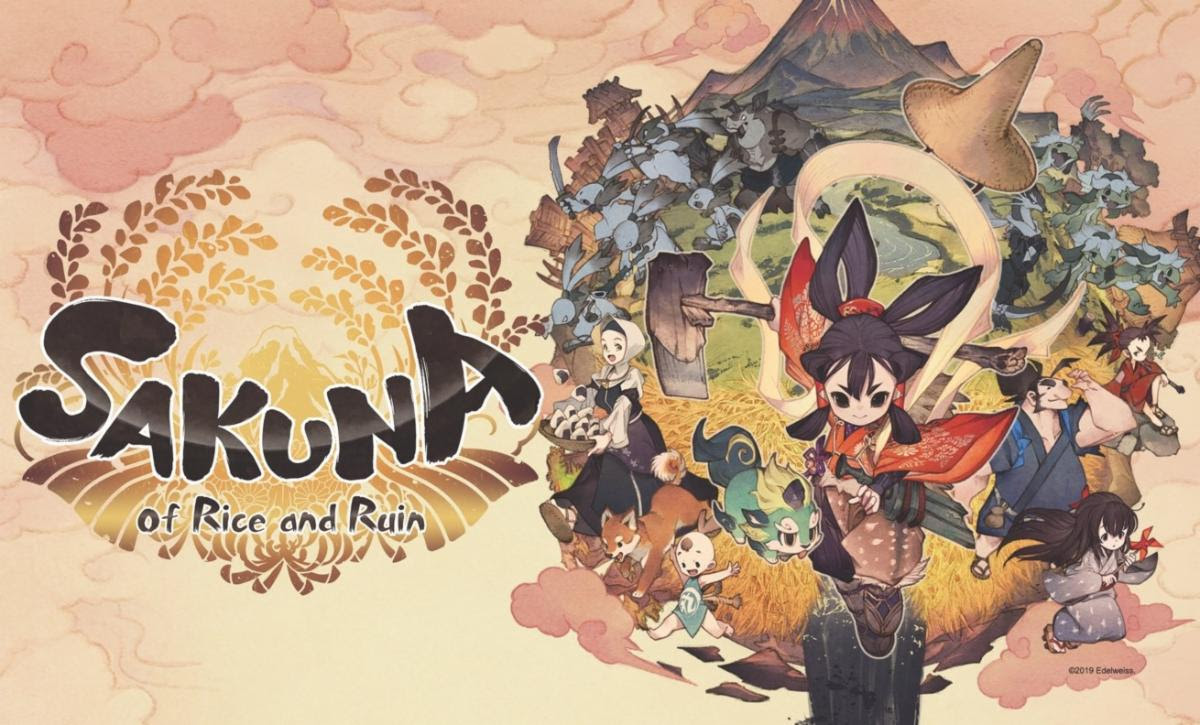
COMMENTS